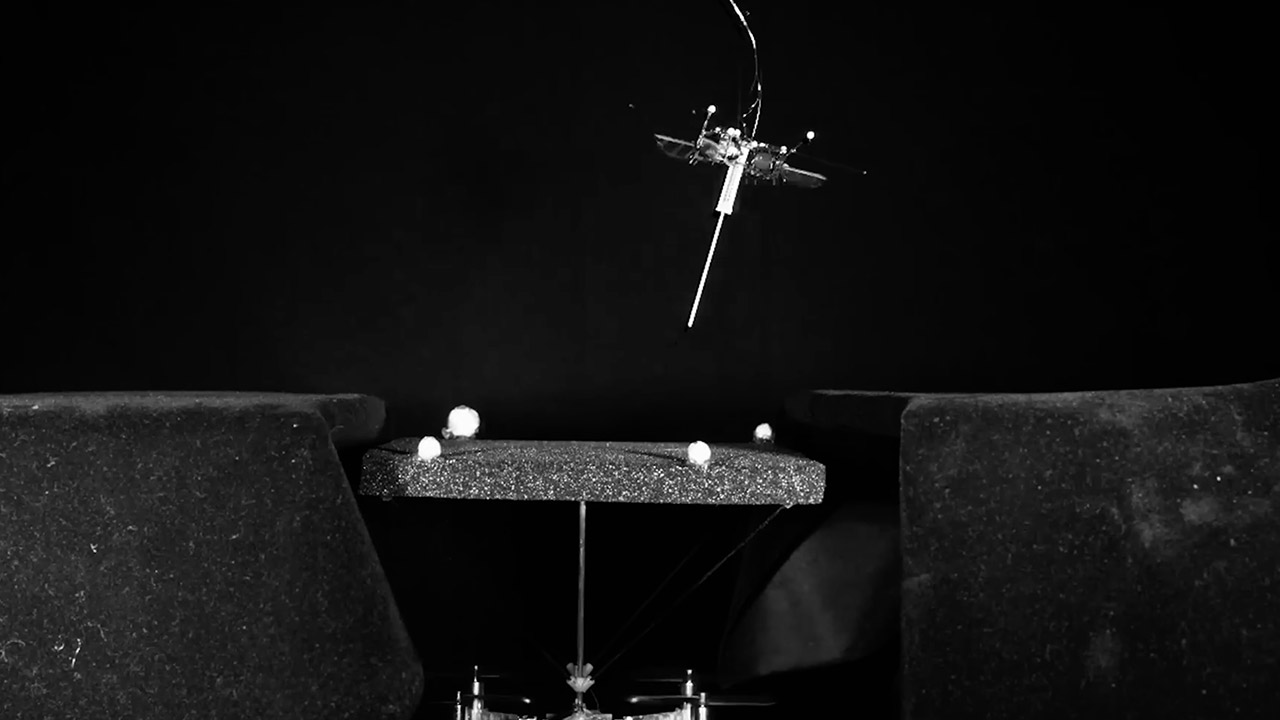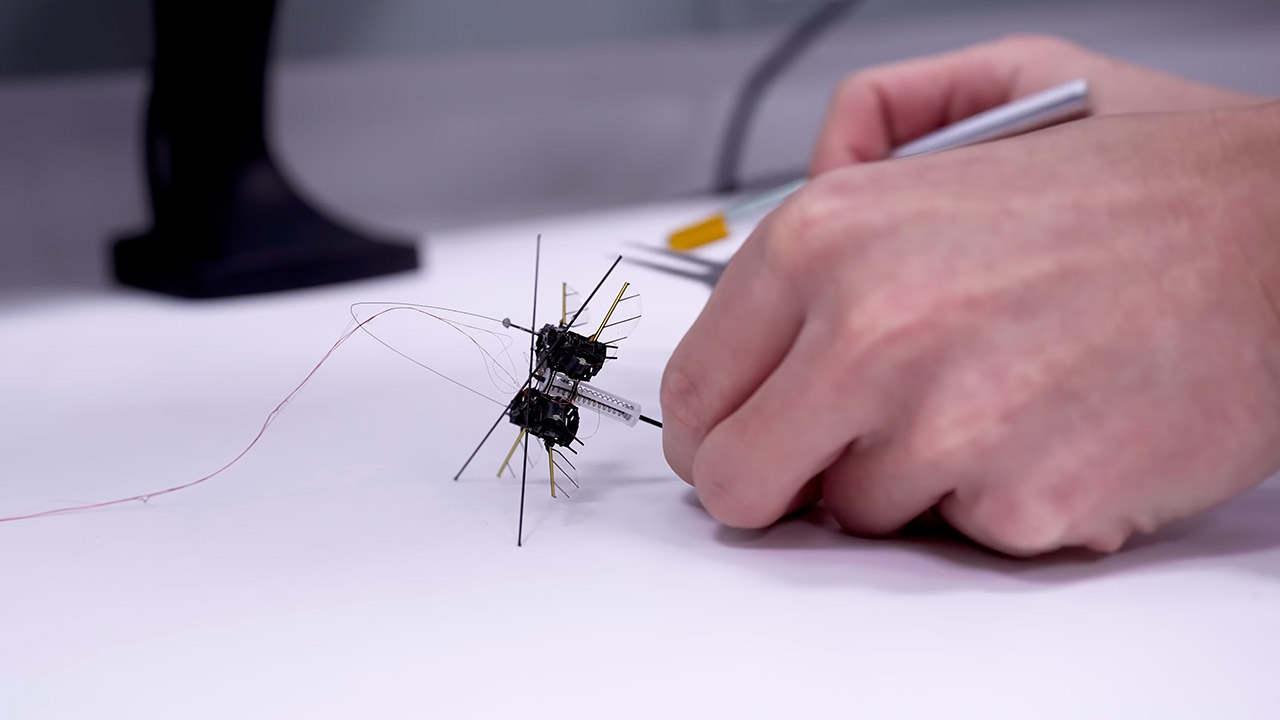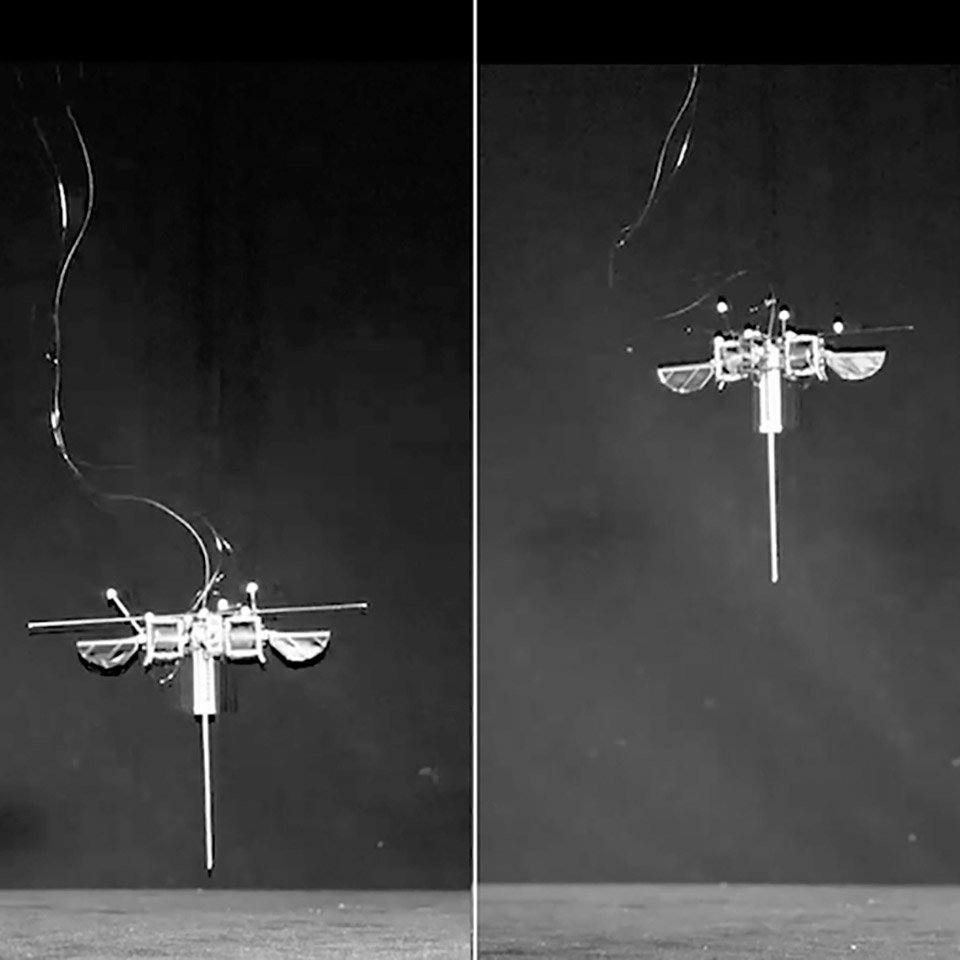MIT engineers have created a paperclip-sized robot that flies like a bumblebee and pollinates crops on Mars. This tiny marvel, from Kevin Chen’s Soft and Micro Robotics Lab, flies and hops.
This robot, weighing less than a gram, flaps its wings 400 times a second, just like a real bee. Four soft actuators (artificial muscles) power its wings, so it can hover, flip and dart through the air. But what’s special is it can hop, using a springy leg to jump 20cm, four times its height, at 30cm a second. This hopping mechanism is inspired by the energy-saving leaps of fleas and grasshoppers and uses 60% less power than a flying robot of the same size. It can carry payloads up to ten times its own weight, so it can carry sensors, circuits and even tiny cameras.

LEGO Disney & Pixar Wall-E & EVE Building Set for Adults, Ages 18+ – Home Office, Book Shelf, or Room…
- LEGO SET FOR ADULTS – The WALL-E and EVE (43279) building set offers adults 18 years old and up an immersive construction challenge featuring…
- 4 DISNEY PIXAR CHARACTERS – Builders can create iconic robots WALL-E, EVE, M-O and Hal from the hit movie—each with authentic functionality like…
- MINDFUL BUILDING EXPERIENCE – This detailed construction set lets builders practice advanced construction techniques for an immersive and relaxing…
A compression spring like the one in a click-top pen stores energy as the robot falls and releases it when it hits the ground and propels it up. The wings generate lift and stability so it can land at the optimal angle for the next jump. It can hop on grass, ice, wet glass, uneven soil and even on a moving drone without damaging it, hinting at future collaborative operations.

Unlike flying robots which use power to stay airborne, hopping robots recycle energy with each jump like a ball bounces back after hitting the ground. The spring converts downhill momentum into upward force and the wings fine tune the direction. Yi-Hsuan Hsiao, a PhD student on the project, says the spring’s efficiency could theoretically allow the robot to hop indefinitely without losing energy but in practice the wings compensate for the minor losses during ground contact. This is crazy: the same robot has been tested countless times without needing repairs, the soft actuators are tough enough to withstand repeated impacts.

A bouncing leg isn’t enough to cross challenging surfaces; instead, the robot uses a motion-tracking gadget and a smart control algorithm to stay on course. As it flies through the air it’s analysing its landing position and adjusting its wing flaps for the next jump. This allows it to hop across tilting surfaces or transition between materials like grass and glass which require different amounts of push. The controller is versatile so the robot stays in rhythm no matter what the task.

Practical applications are as cool as they are varied. On Earth these robots can pollinate crops in indoor farms where natural bees struggle with artificial light. On Mars where there are no natural pollinators they can be used in Martian agriculture. Its ability to carry large payloads for its size makes it perfect for environmental monitoring and search and rescue missions in tight spaces like collapsed buildings. Its dexterity as shown by acrobatic flips and hops onto flying drones means these robots will work together to do tough tasks.
[Source]
